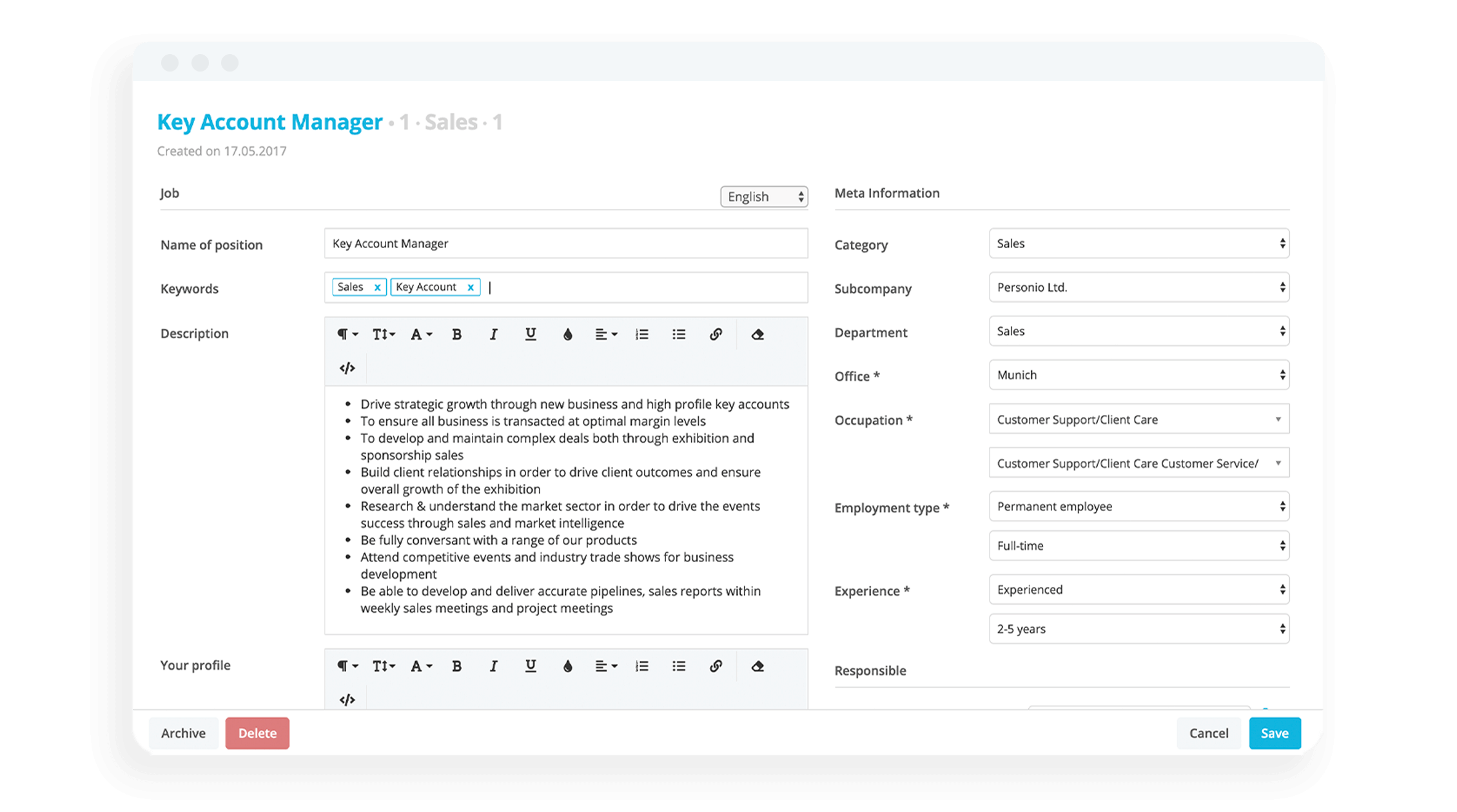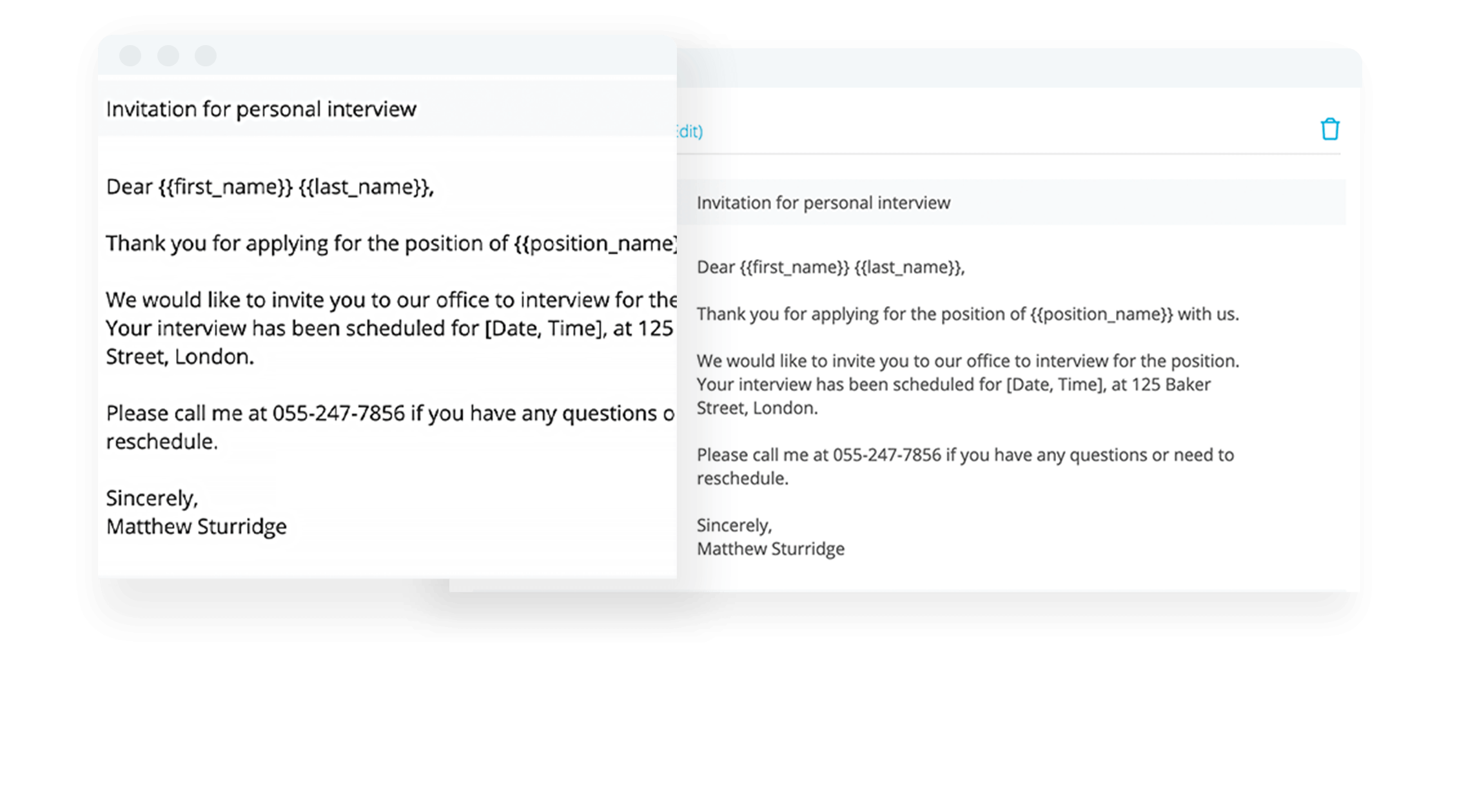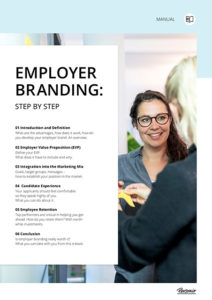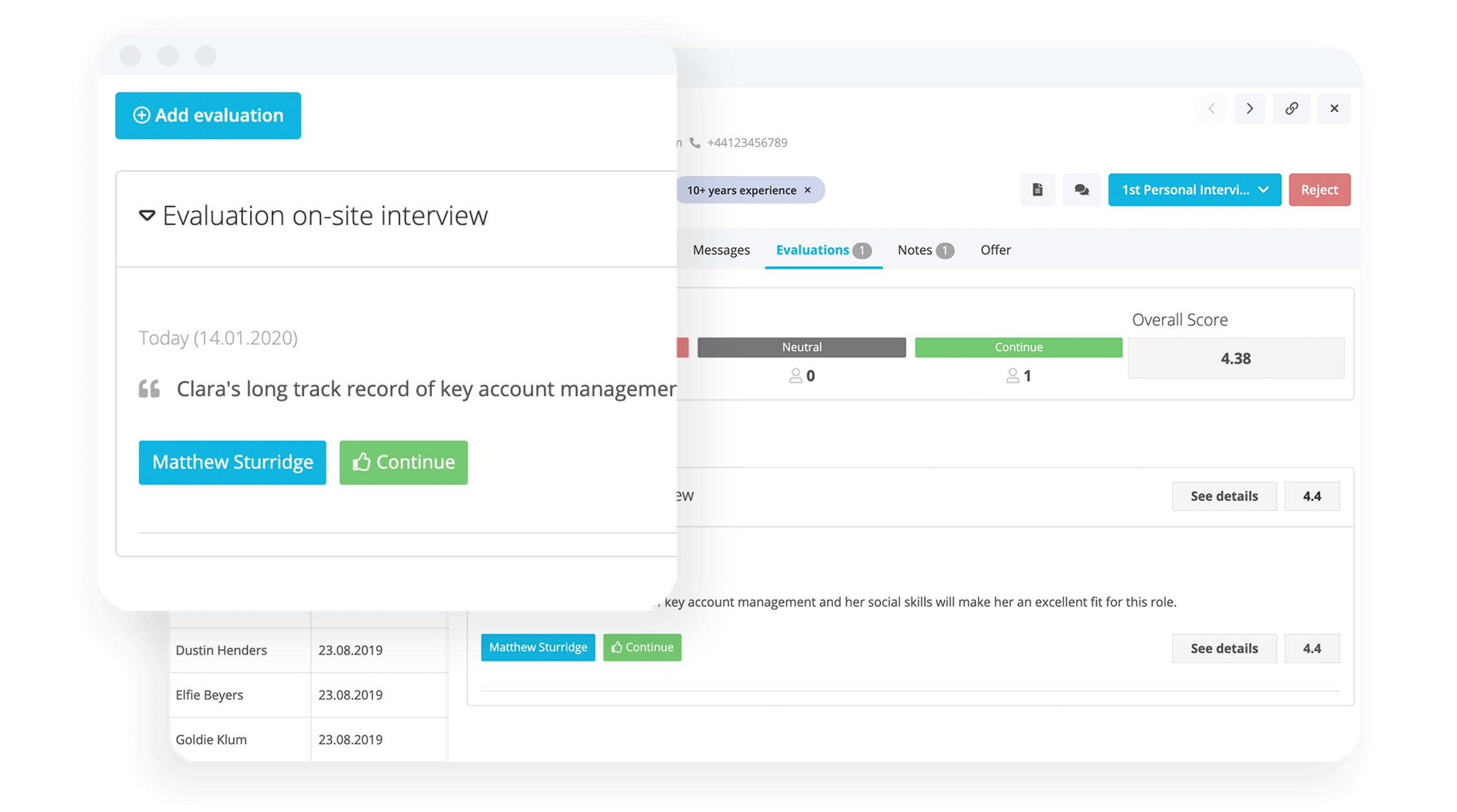Talent Pipelines: How To Design, Build, and Fill Them

At a moment’s notice, how prepared is your organization to fill a key position? A talent pipeline may play a decisive role here, as it can prepare for org for key departures and fill them immediately. In this article, we’ll explain the full story behind them, and how to start building and filling one today.
Employer branding can unlock your talent pipeline. Download our eBook today.What Is A Talent Pipeline?
A talent pipeline is an on-demand collection of pre-screened and qualified candidates who can step into vacant roles, through your organization, quickly and easily. It is designed with the express intent to fill roles fast, and to build a collection of pre-qualified talent to feed your team’s talent acquisition strategy.
In general, a talent pipeline will likely be comprised of two types of candidates:
Internal candidates – Those already in your organization who show potential for roles in different departments or management.
External candidates – Candidates who have already been in contact with your organization and have been qualified as having key skills for future/current roles.
From an attraction and acquisition perspective, it makes more sense for your recruiting team to focus on the latter (external candidates) rather than the former (internal candidates). That’s because internal candidates will more likely reveal themselves through your learning and development or performance efforts.
That being said, a talent pipeline does rely on a mix of active and passive candidates, and your organization’s ability to ‘activate’ them quickly. It affords a greater level of flexibility and resilience when it comes to your workforce planning.
Talent Pipelines & Workforce Planning
As we’ll cover in greater detail later on, your talent pipeline is only as good as the foundation your organization sets in other matters. This starts from the top, at business strategy, but it also loops in workforce planning. After all, your workforce plan needs to be clear to fill your potential pipeline with great candidates. Your HR team will need to know who you want to hire, how many, and when.
Before we get into that, though, let’s talk about the merits of a talent pipeline…
Why Do You Need A Talent Pipeline?
Because great talent waits for no one. In a world where talent is becoming a prized and at-times scarce resource, it is essential that organization’s don’t ‘play the waiting game’ when it comes to hiring roles — especially those vacated by key talent (think supervisors, managers, or those with great institutional knowledge). A talent pipeline allows your org to move fast and with greater impact.
Some of the more tangible benefits of contracting talent pipelines include:
Reduced time to hire and overall hiring costs
Higher quality candidates (or more well-known candidates)
More effective succession and workforce planning
A more expansive and satisfying candidate experience
Faster processes overall (especially when paired with great onboarding)
Ultimately, your talent pipeline benefits your team as an expression of your business strategy, workforce plan, and succession plan. It sets your team up for success, by playing host to future talent that could impact your business down the road.
Build Your Talent Pipeline From One Place

Source amazing candidates with Personio. Keep a record of all your candidates, job postings, and then report on the trends to see which perform best. Click the button below to discover finding the ideal candidates with Personio.
Find Top Talent With PersonioWho Is Responsible For Talent Pipelines?
As mentioned, the responsibility for designing a talent pipeline will typically fall on a few key stakeholders: Executive-level leadership, managers, and your people team. That said, that’s really just the bare bones of your pipelining efforts, as building, filling, and maintaining it will fall on your HR and talent teams.
How Does A Talent Pipeline Relate To Overall Recruiting?
Conversations around talent pipelines symbolize something of a paradigm shift when it comes to recruiting and overall talent acquisition strategy. That is, a change from reactive to proactive recruiting — a direct byproduct of an increased war for talent and changing candidate needs.
In that sense, a talent pipeline is both a key cog and a result of your overall recruiting strategy. It will be influenced by your employer brand, your ability to maintain recruitment touchpoint, and also your overall candidate experience processes.
How? Well, we’ll dive into that a bit later. For the time being, it’s important to know that a talent pipeline can both shape and be shaped by your recruitment strategy.
Talent Pool, Pipeline, Community, and Marketplace
When we begin a conversation around talent pipelines, a handful of other terms spring up that require a certain level of clarity. Let’s run through each so we’re all on the same page:
Talent Pool – A collection of potential candidates for roles in their organization. They have not been vetted or screened, but could be reached out to at any point.
Talent Pipeline – The difference between a pool and a pipeline is screening. Your talent pipeline will be filled with candidates you know, even a little, who can step into a role today.
Talent Community – These are external communities, think LinkedIn or Facebook groups, made up of potential talent who you could reach out to with relative ease (but unexpected results).
Talent Marketplace – A place for your organization to post internal roles. A talent marketplace is typically reserved to actively-searching current employees who may want to make a change.
The key relationship to hone in on here is the one shared between talent pools and pipelines. Let’s roll with an example to make this a bit more tangible:
Let’s say that your organization is on the hunt for a new head of sales. A talent pool would consist of all the potential candidates your hiring team is interested in, but has not reached out to yet. These are people who might be qualified, in theory, but haven’t been vetted in any way.
To go from pool to pipeline, your team will need to make contact with candidates and qualify them without committing to giving them the role. These candidates would be a great fit, and now they are in the pipeline because of it. In that sense, prospective talent graduates from pool to pipeline.
How Do You Design A Talent Pipeline?
Let’s get into it! Here are the six key steps that should go into the design of your talent pipeline:
Step | Explained |
|---|---|
Square It With Strategy | Your talent pipeline will be defined by three things: your business strategy, and overall workforce plan, and succession plan. Make sure each of these are aligned with one another, in the order listed above. |
Attract Talent | You need to play the long game for an amazing talent pipeline. That means focusing on your employer brand, total reward packages, and other benefits that attract people to your organization in the first place. |
Assess Talent | Turn your talent pool into a talent pipeline through screening and qualification. Talk to candidates, leave notes, and never neglect your second-place finishers. Make sure you’re assessing talent thoroughly and fairly. |
Maintain Touchpoints | Find ways to keep in touch with candidates in your talent pipeline, whether through email, social media, or elsewhere. Make sure you are playing a key role in their search, even passively, by continuing to focus on employer branding. |
Craft A Reach-Out Strategy | What happens when new positions are created or current roles open up? For your talent pipeline to work, you need to have a strategy to access it and to reach out to candidates who can step in quickly. |
Measure & Monitor | Keep a close eye on both your talent pipeline and your organization. Are roles opening up? Is your attrition rate climbing higher? How are pipeline candidates performing when they get the job? Make sure your pipeline-to-organization process is working well. |
Reach Out To Talent In Your Pipeline

Personio’s Applicant Tracking Software allows your team to reach out to candidates with automated invitation emails. Ensure a greater process and candidate experience by learning more about Personio today.
Optimal Candidate Experience With PersonioHow Do You Fill Your Pipeline?
While we may now know how to build one, how do you fill your talent pipeline with amazing potential recruits who could come aboard and positively impact your business? You can quickly fill your talent pipeline by focusing on three key areas, each requiring varying levels of effort:
Reengage Runners Up – Have a host of candidates who finished second for their role? You spent time vetting them, and they may be qualified to do another job or take on an upcoming departure, so engage with these folks first for the highest return on investment.
Actively Source Non-Job Seekers – Passive candidates are great, because they make up the vast majority of the job market, and they are not necessarily interested in starting tomorrow. If you have a departure in a couple months, sourcing candidates for your pipeline is a great idea.
Run Talent Attraction Campaigns – Your employer branding efforts, like social media posts and other campaigns, can go a long way in engaging a potential universe of amazing candidates. Focus on those efforts, and seek out candidates to generally apply.
Talent Pipeline Best Practice: Create Candidate Personas!
A talent pipeline is most effective when it’s specific. The more specialized you make your pipeline, and the more you target it to a specific role or skillset, the better the process of hiring that future candidate will become. For this to work, you need to formulate candidate personas for talent pipelines.
A candidate persona is a key part of any great talent pipeline. In short, it is a semi-fictional representation and characterization of your ideal candidate — the skills, demeanour, qualifications, and traits that make up the ideal hire. It may be based on a current high performer, or a ‘unicorn’ (your org’s dream candidate).
For sourcing and finding talent, these personas will effectively shape your various talent pipelines. It will ensure that your pipeline is attuned to your needs, or to a specific departure, and not too wide open for just ‘interesting’ or ‘potential’ candidates. It adds both clarity and focus.
For recruiters, a candidate persona can really go a long way in activating your talent pipeline. This way, when new roles are created or opened up, your team can quickly screen your pipeline to see which candidates hit all the boxes and which you should pass on.
How Can You Keep Your Pipeline Engaged?
In the steps we covered, we mentioned creating and maintaining touchpoints with your employer brand to help keep candidates actively in your pipeline. But, how does this look in practice?
The easiest way to think about it is through content, and through the content your team creates to keep candidates interested in what your organization is doing. Consider the following ideas:
Social Media – Join groups, actively comment, and engage with your audience while also showcasing what it looks like to work at your company.
Core Values – Don’t neglect opportunities to showcase your company core values and the various programs you run to live them.
Blog Posts – Share stories about what it means to work at your organization, how you approach things like compensation or diversity, and interview your workforce to put a face to the journey.
Network – Use your talent to find more talent! Actively ask your employees for referrals to talented people, have them reach out, and segment them accordingly by pipeline.
Testimonials – Whether on your website or third-party ones, prospective candidates (whether actively searching or not) will be doing their homework. You want them to like what they see.
Pipelining relies on a long-term approach, as it is an initiative that builds over time. That said, one of the biggest things you can do to help your talent pipeline is to focus on your employer brand and your corporate culture. This can pay massive dividends in the future.
Download Our Employer Branding eBook

Give your talent pipeline the shot in the arm that it deserves and download our eBook to employer branding today. The entire topic, step by step, so that your organization can attract, develop, and retain top talent today.
Download The GuideWhat Kind Of Talent Pipeline Tools Should You Use?
For starters, an HR software can help build a great foundation for your pipelining efforts. This is both true of a software that helps with your recruiting, as well as your human resource management efforts.
When you have the right HR software in place, you have somewhere where you can house employee information, monitor performance, and even begin to identify trends based on HR analytics and reports (like attrition rates, early leavers, salary progression, headcount, and more).
At the same time, an HR software that ties together seamlessly with a recruiting software can also ensure an effective sourcing, tracking, and onboarding experience. That way, candidates who enter and exit your talent pipeline have a great experience and are ready to be productive from day one.

